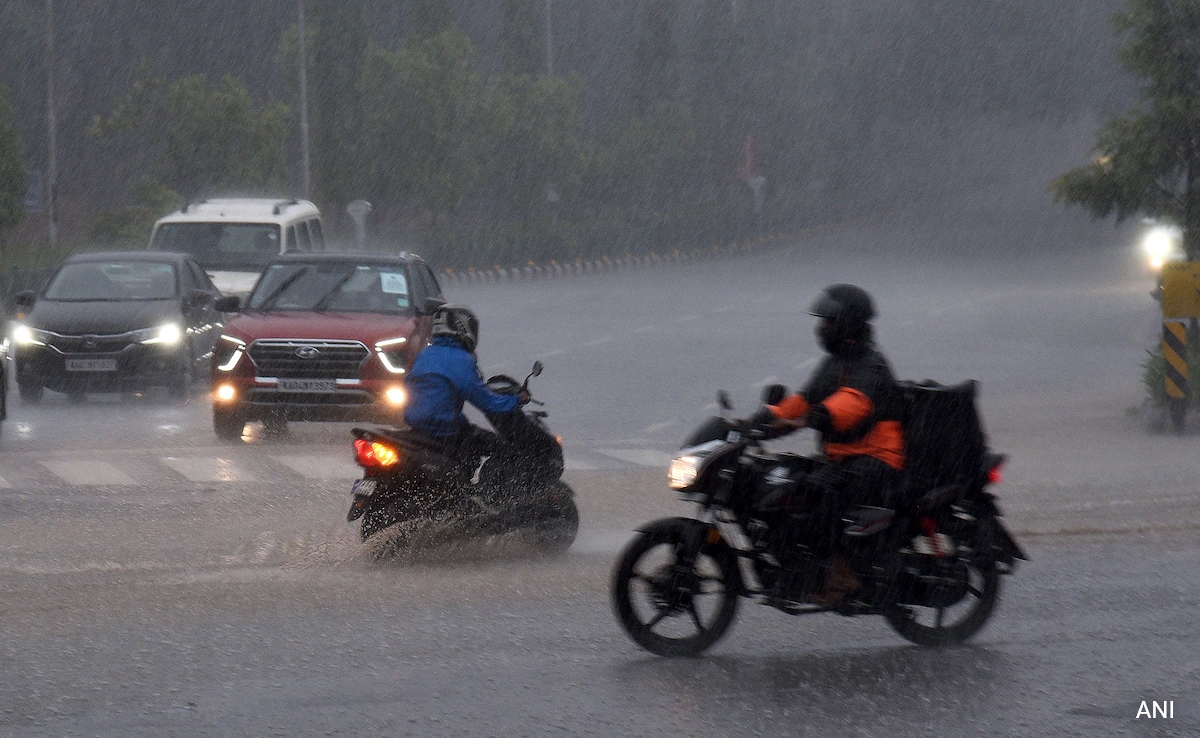Devastating Downpour Engulfs Bengaluru, Resulting in Five Fatalities
Bengaluru has been grappling with severe rainfall for over 36 hours, leading to an alarming rise in rain-related fatalities, which have now reached five, as per official reports. The heavy downpour has disrupted daily life in the city, with residents navigating through knee-deep water, traffic jams paralyzing major routes, and widespread havoc reported in various neighborhoods. The ongoing situation has prompted local authorities to launch rescue operations and provide urgent assistance to affected citizens.
The relentless rain has transformed areas like Sai Layout into virtual islands, where the ground floors of many houses remain half-submerged. Approximately 150 individuals were rescued on Monday and relocated to safer quarters, revealing the magnitude of the disaster. The Bruhat Bengaluru Mahanagara Palike (BBMP), the city’s municipal authority, has mobilized its resources to provide food and water for the distressed residents in affected areas, highlighting the community’s need for immediate support during this crisis.
Moreover, the situation took a tragic turn on Tuesday when two individuals, including a 12-year-old boy, lost their lives due to electric shocks while attempting to drain water that had flooded their apartment. The incident underscores the inherent dangers posed by the extreme weather conditions. Manmohan Kamath, a 63-year-old resident of an apartment complex in NS Palya, was electrocuted after a short circuit occurred when he tried to use a motorized pump to clear rainwater. Tragically, Dinesh, the young son of a Nepalese worker, was standing nearby and also fell victim to the fatal electric shock.
City Struggles with Infrastructure Challenges Amidst Severe Weather Warnings
Throughout the city, residents have expressed their frustration with local civic authorities, asserting that they have been unresponsive to their needs during this disaster. Reports of stranded vehicles and the emergence of new potholes on the roads have compounded the difficulties for commuters, leading to widespread traffic congestion. Although authorities are working hard to manage the situation, the scale of the flooding presents significant challenges.
As per the report by *NDTV*, the delays in response times and the inadequate drainage systems in place have been the primary causes of the flooding and resulting damage. In certain districts, including Mangaluru, which recorded 90 mm of rain in the last 24 hours, local governments are scrambling to manage the escalating crisis.
The Indian Meteorological Department (IMD) has communicated that Bengaluru received about 30 mm of rain in the last 24 hours alone, a cumulative total of 105 mm recorded over the weekend. This overwhelming precipitation has triggered an orange alert for the city, suggesting very heavy rainfall of between 11 cm to 20 cm, while other areas across Karnataka are under a yellow alert for significant rainfall.
The IMD has advised residents to stay indoors and avoid unnecessary travel, particularly in flood-prone zones. The department’s announcement includes warnings to avoid taking refuge under trees, unplug electrical appliances, and steer clear of water bodies, emphasizing the urgency for safety measures in light of ongoing adverse weather conditions.
Dealing with Natural Disasters: The Fight for Infrastructure and Community Safety
While the current rainfall situation is grim, it’s functioning as a wake-up call for the city and its residents regarding its infrastructure and emergency preparedness. The confluence of rapid urbanization and inadequate drainage systems has rendered many parts of Bengaluru vulnerable to flooding during periods of heavy rainfall. As highlighted by IMD’s Bengaluru Centre Director, N Puviarasu, the city’s concrete landscape severely limits the natural drainage outlets, exacerbating the flooding problem.
In the wake of this crisis, numerous residents have called for improved urban planning and investment in flood management initiatives to avert similar disasters in the future. Local activists and community leaders are advocating for better infrastructure that can withstand heavy downpours, alongside an efficient response strategy from civic bodies.
Furthermore, the tragic deaths highlighted the critical importance of education on safety during such calamities. As experts are urging, greater awareness campaigns must be implemented to guide citizens on the necessary precautions to take during severe weather events.
For those interested in safeguarding their homes against flooding and learning more about emergency preparedness, resources are available on websites dedicated to disaster management and community safety. You can read more about these measures at[FEMA](https://www.fema.gov) and[National Weather Service](https://www.weather.gov).
In the wake of this ongoing crisis, it’s essential for community members to come together and advocate for improved infrastructure and emergency management resources, ensuring that no one is left vulnerable during future storms. The challenges posed by climate change necessitate immediate and long-term solutions to build a resilient urban environment capable of withstanding the elements.
As Bengaluru continues to cope with the aftermath of the recent downpours, the focus remains on recovery and rebuilding, highlighting the urgent need for unified efforts in managing urban flooding and enhancing community safety.
By addressing both the immediate challenges and the systemic issues contributing to these crises, Bengaluru can work towards a safer and more resilient future for all its residents.
DISCLAIMER
We have taken every measure to ensure that the information in this article and on our social media platforms is accurate, verified, and obtained from reliable sources. For feedback or complaints, please contact us at info@hamslive.com.


